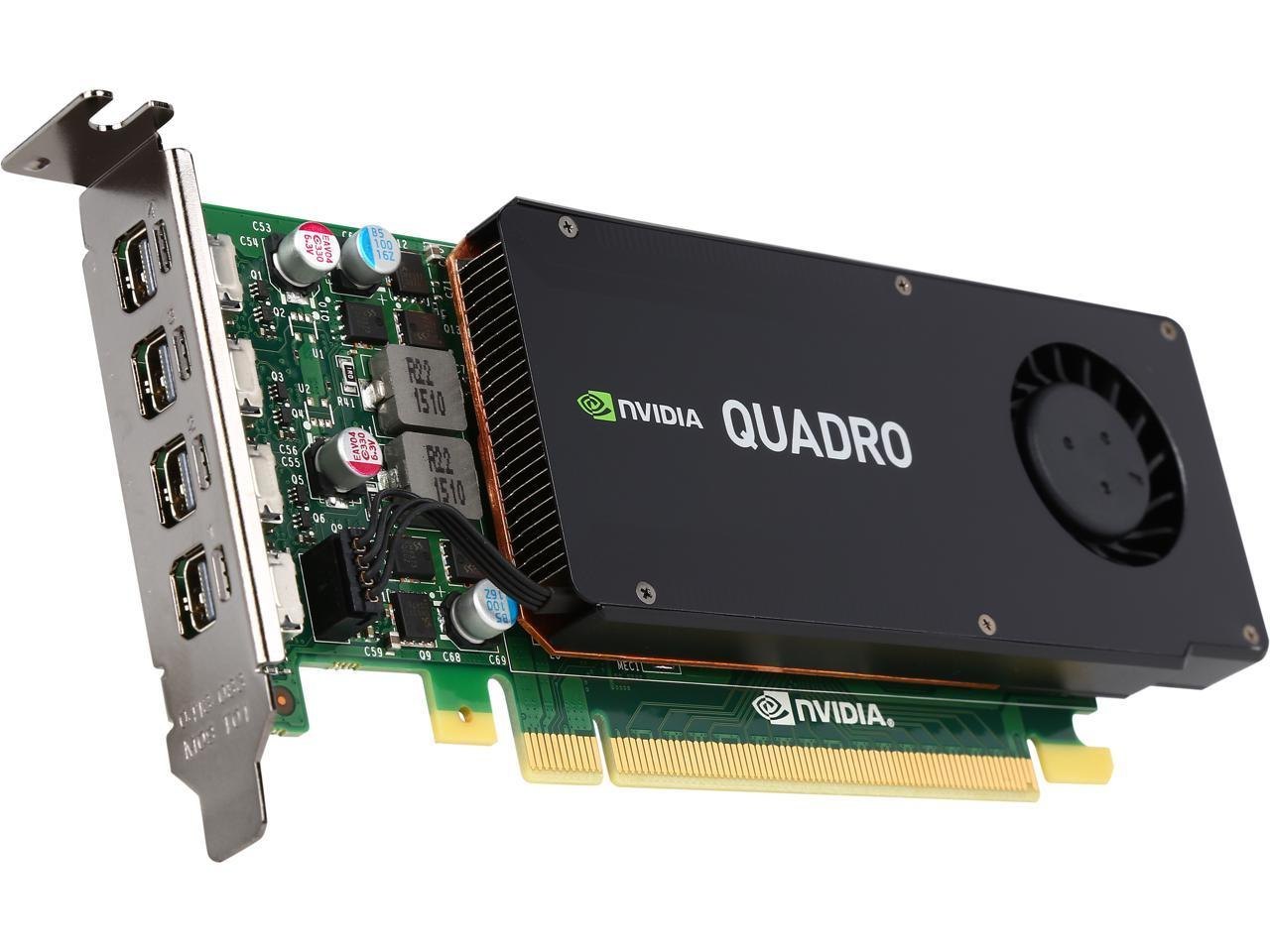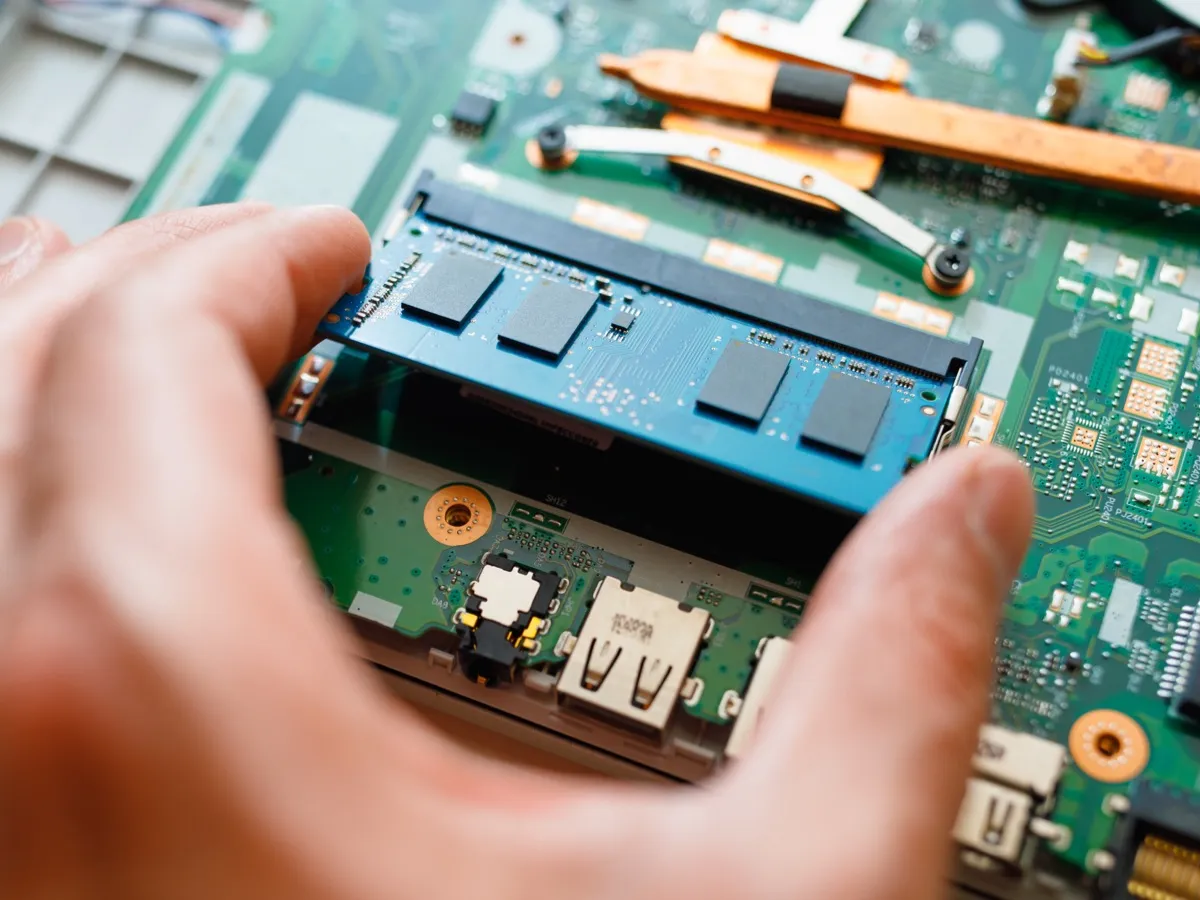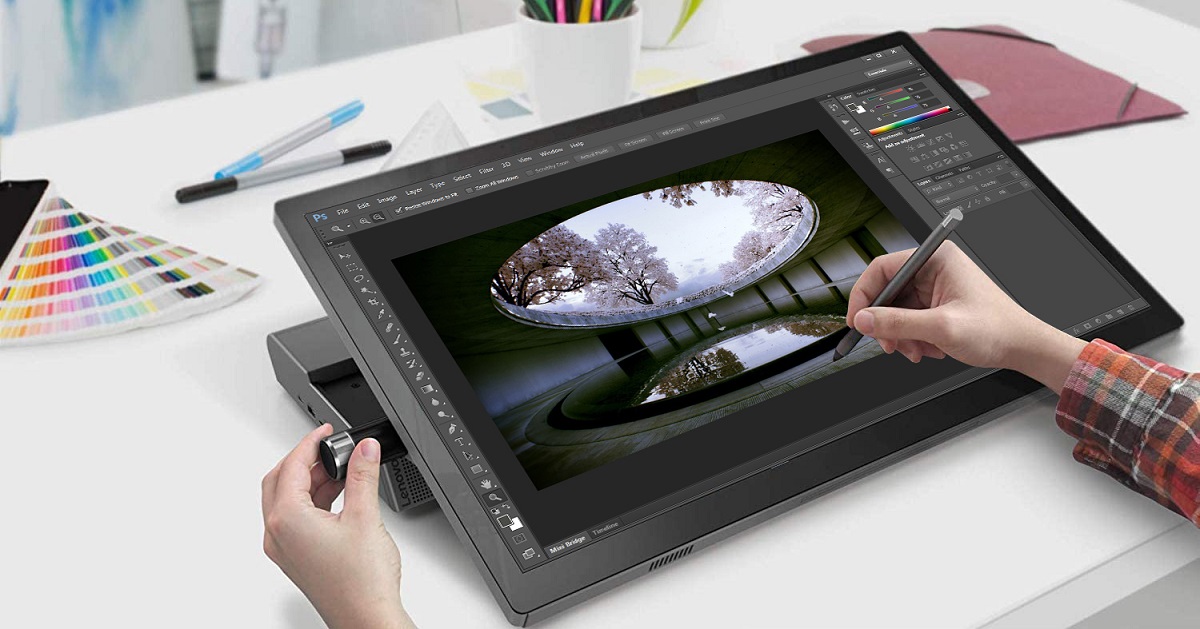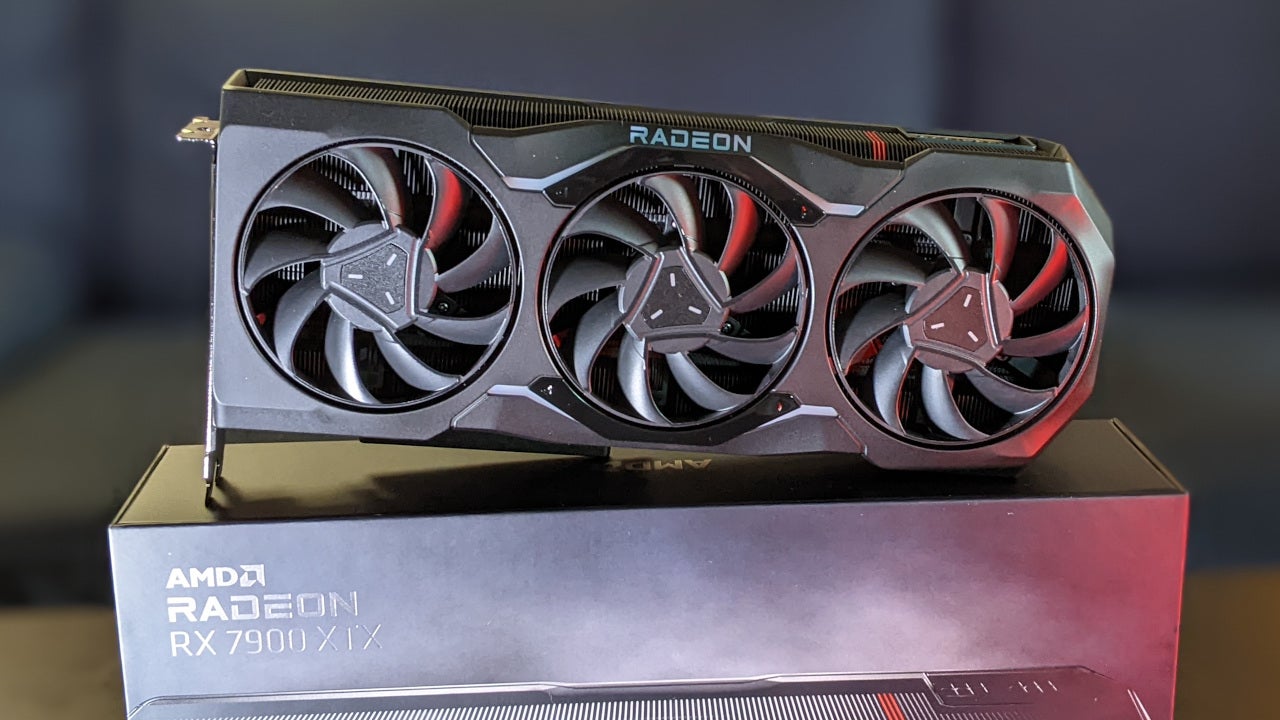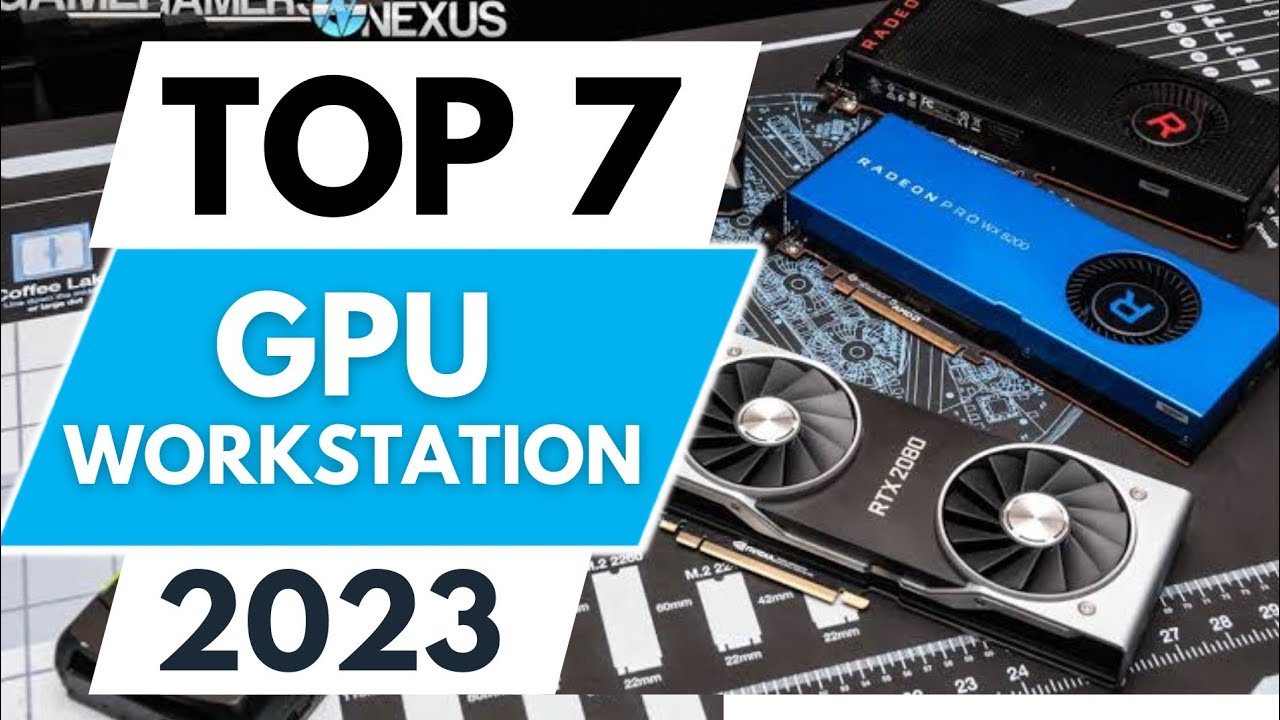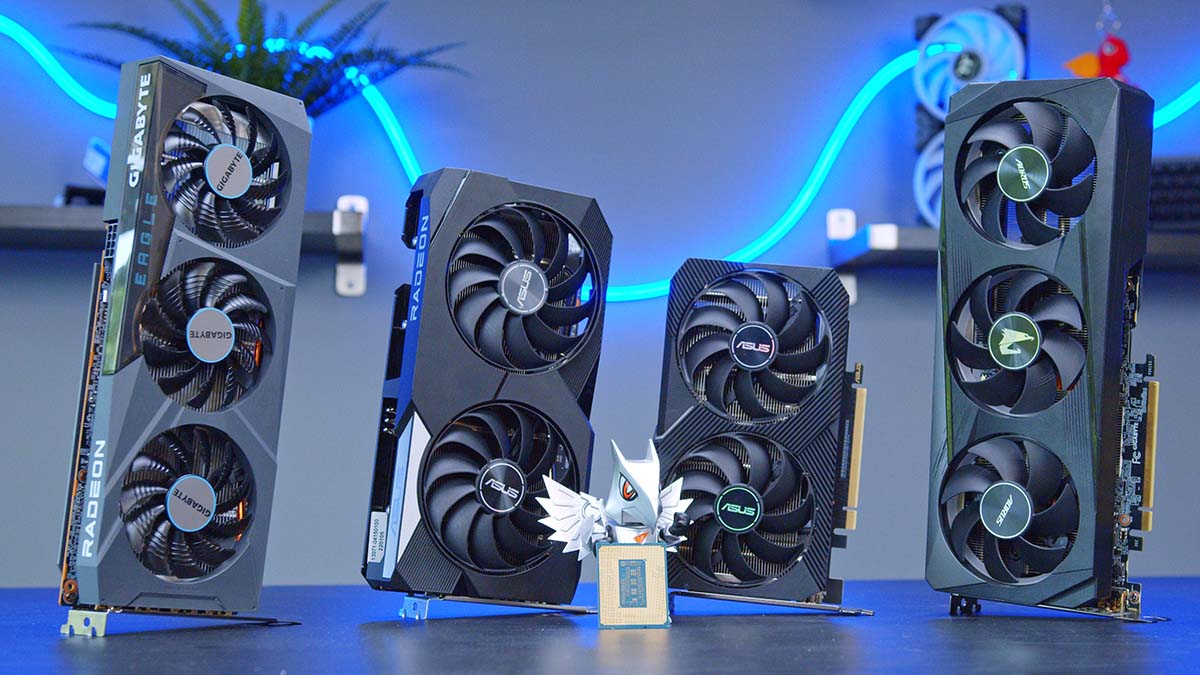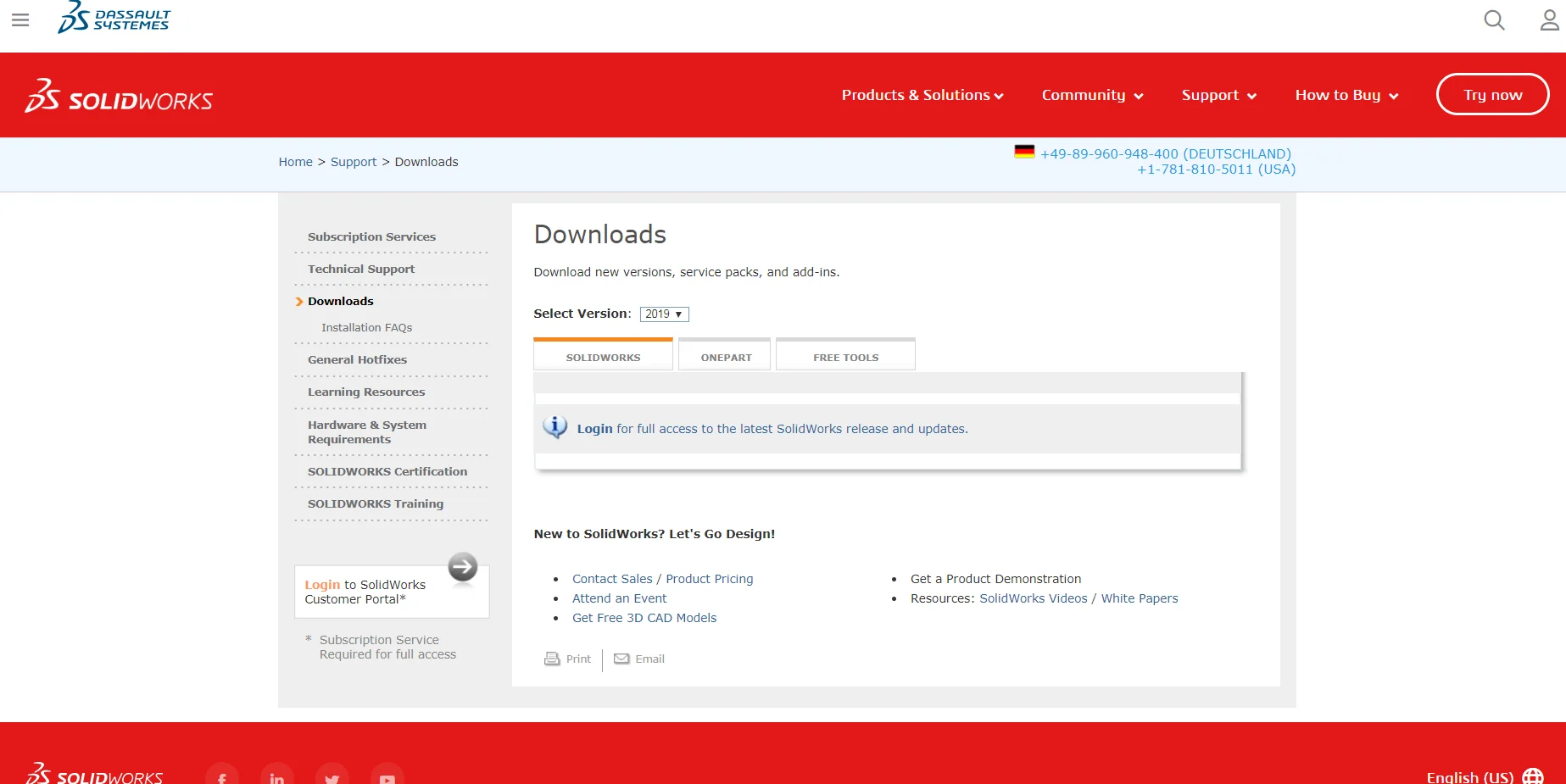Introduction
Welcome to our guide on finding the best graphics card for Solidworks. Whether you are an architect, engineer, or designer, having a powerful graphics card is crucial for running Solidworks smoothly and efficiently. In this article, we will explore the world of graphics cards and help you determine which one is best suited for your Solidworks needs.
Solidworks is a leading 3D computer-aided design (CAD) software used by professionals in various industries. It allows users to create, simulate, and analyze complex designs with ease. One of the key components required for a seamless Solidworks experience is a high-performance graphics card.
Having a powerful graphics card is vital for rendering and displaying 3D models accurately and in real-time. It ensures smooth navigation, reduced lag, and improved overall performance. With the right graphics card, you can experience faster load times, realistic renderings, and interactive simulation capabilities.
There are several factors to consider when choosing a graphics card for Solidworks. The right card will depend on your specific needs, budget, and the complexity of your projects. We will discuss some of the recommended graphics cards for Solidworks and highlight their features and capabilities.
Please note that different versions of Solidworks may have specific requirements for graphics card compatibility. It is always recommended to check the official Solidworks website or consult with your IT department to ensure compatibility before making a purchase.
In the following sections, we will dive into the importance of graphics cards in Solidworks and provide you with a list of the top graphics cards recommended for this software. So, let’s get started and find the perfect graphics card to enhance your Solidworks experience!
What is Solidworks?
Solidworks is a powerful 3D computer-aided design (CAD) software that enables engineers, architects, and designers to create, simulate, and analyze complex models. Developed by Dassault Systèmes, Solidworks offers a comprehensive set of tools and features that streamline the design process and facilitate collaboration among teams.
With Solidworks, users can design products in 3D and visualize them from all angles. The software allows for precise modeling of parts and assemblies, making it ideal for mechanical design, product development, and industrial engineering. From concept to manufacturing, Solidworks offers a complete solution for bringing ideas to life.
One of the key features that sets Solidworks apart is its parametric modeling capabilities. This means that users can create designs that are based on parameters, making it easy to modify and update designs as needed. With parametric modeling, changes made to one part of the design automatically propagate throughout the entire model, reducing time-consuming rework and ensuring design continuity.
In addition to parametric modeling, Solidworks offers a range of tools for simulation and analysis. Users can simulate the behavior of their designs under various conditions to validate and optimize performance. This includes finite element analysis (FEA) for structural analysis, computational fluid dynamics (CFD) for analyzing fluid flow, and motion simulation for testing the movement of assemblies.
Solidworks also provides tools for documentation and communication. Users can generate detailed drawings, technical documentation, and bill of materials (BOM) directly from their 3D models. Collaboration is made easy with features like eDrawings, which allow users to share and review designs with stakeholders, even if they don’t have Solidworks installed.
Overall, Solidworks is a versatile and powerful CAD software that caters to the needs of a wide range of industries. Whether you are designing mechanical components, architectural structures, or consumer products, Solidworks provides the tools and capabilities to bring your ideas to life in a precise and efficient manner.
Importance of Graphics Card in Solidworks
The importance of a graphics card in Solidworks cannot be overstated. It plays a crucial role in ensuring smooth and efficient operation of the software, enhancing the user experience, and improving productivity. Here are some key reasons why a powerful graphics card is essential for Solidworks:
- Real-time 3D Visualization: Solidworks is a software that heavily relies on 3D visualization. A powerful graphics card allows for real-time rendering of complex models, enabling users to view their designs accurately and in high detail. This not only enhances the design process but also helps in identifying errors or design flaws early on.
- Smooth Navigation and Manipulation: As Solidworks deals with intricate and detailed models, a high-performance graphics card ensures smooth navigation and manipulation of these models. With a powerful card, users can rotate, zoom, and pan the models with minimal lag, providing a seamless and immersive design experience.
- Improved Rendering and Simulation: Rendering and simulation are integral parts of Solidworks. A graphics card with advanced rendering capabilities enhances the realism of the rendered images and aids in accurate visualizations. Similarly, during simulations, a powerful graphics card allows for faster computations and smoother simulation results, thus enabling engineers to iterate and optimize their designs more efficiently.
- Multi-Display Support: Many professionals working with Solidworks prefer multi-monitor setups to increase their productivity. A high-performance graphics card can handle multiple displays efficiently, allowing users to work across different windows and applications simultaneously without compromising performance.
- Compatibility and Performance Optimization: Solidworks is optimized to take advantage of specific features and technologies offered by certain graphics card brands. It is important to choose a graphics card that is officially certified for Solidworks, as it ensures compatibility and may offer additional performance benefits specific to the software.
Overall, a powerful graphics card in Solidworks significantly enhances the user experience, improves productivity, and enables users to work on complex designs with ease. It ensures smooth navigation, realistic visualizations, and efficient simulations. Investing in a high-performance graphics card tailored for Solidworks is a worthwhile investment for professionals who rely on this software for their design and engineering needs.
Recommended Graphics Card for Solidworks
When it comes to choosing a graphics card for Solidworks, there are a few options that stand out in terms of performance, compatibility, and features. Here are some of the top graphics cards recommended for Solidworks:
- Nvidia Quadro RTX 5000: The Quadro RTX 5000 is a professional-grade graphics card that offers exceptional performance and features. It comes with dedicated ray-tracing cores and advanced AI capabilities, providing real-time rendering and accurate simulations. This card is ideal for handling large assemblies and complex models in Solidworks.
- AMD Radeon Pro WX 8200: The Radeon Pro WX 8200 is another high-end graphics card that delivers superb performance for Solidworks. It offers excellent multi-threaded performance and is capable of handling demanding 3D models with ease. With its large memory capacity and high bandwidth, it can handle large assemblies and extensive simulations efficiently.
- Nvidia GeForce GTX 1660 Ti: Although not specifically designed for professional workloads, the GeForce GTX 1660 Ti offers excellent performance at an affordable price. It provides an optimal balance between price and performance, making it a great choice for Solidworks users on a budget. It can handle medium-sized assemblies and provides smooth navigation and reliable simulation capabilities.
- AMD Radeon Pro WX 4100: The Radeon Pro WX 4100 is a budget-friendly graphics card that still delivers respectable performance for Solidworks. It offers four display outputs, making it suitable for multi-monitor setups. While it may not be as powerful as high-end options, it can handle small to medium-sized assemblies and provides a smooth overall experience.
- Nvidia Quadro P4000: The Quadro P4000 is a mid-range graphics card that strikes a balance between performance and cost-effectiveness. It offers excellent performance for medium to large-sized assemblies in Solidworks and supports advanced features like VR rendering and multiple displays. This makes it a popular choice among professionals working with Solidworks.
When choosing a graphics card for Solidworks, it is important to consider factors such as the size and complexity of your projects, your budget, and the level of performance you require. While the recommended graphics cards mentioned above are excellent choices, it is always best to choose one that aligns with your specific needs and requirements.
Remember to check the official Solidworks website for a list of certified graphics cards and ensure compatibility with your system before making a final decision. Investing in a high-quality graphics card will significantly enhance your Solidworks experience and allow you to unleash your creativity and productivity in designing and engineering.
Nvidia Quadro RTX 5000
The Nvidia Quadro RTX 5000 is a top-of-the-line graphics card specifically designed for professional workloads, including Solidworks. It offers unparalleled performance and cutting-edge features that make it an ideal choice for handling complex and resource-intensive designs. Here are some key features of the Nvidia Quadro RTX 5000:
- Real-Time Ray Tracing: The Quadro RTX 5000 is equipped with dedicated ray-tracing cores, which enable real-time rendering of photorealistic visuals. This feature allows designers and engineers to view their designs with stunning accuracy, providing a highly realistic representation of their work.
- Advanced AI Capabilities: With Tensor Cores and deep learning algorithms, the Quadro RTX 5000 offers advanced AI capabilities that enhance productivity and efficiency. AI denoising and upscaling techniques help to reduce rendering times and improve image quality, allowing for faster iterations and more detailed visualizations.
- Large GPU Memory: The Quadro RTX 5000 comes with ample GPU memory, allowing for the handling of large assemblies and complex models without compromising performance. This is particularly beneficial for professionals working on projects with intricate details or extensive simulations.
- Optimized Solidworks Performance: Nvidia works closely with Solidworks to ensure optimal performance and compatibility. The Quadro RTX 5000 is fully certified by Solidworks, guaranteeing a seamless experience and reliable performance when working with the software. It also supports specific features like RealView, which provides enhanced visuals and shading effects.
- Virtual Reality (VR) Support: For professionals involved in virtual reality design or simulation, the Quadro RTX 5000 offers support for VR applications. It can handle VR rendering with ease, providing an immersive and realistic experience for design review and evaluation.
The Nvidia Quadro RTX 5000 is undoubtedly a powerful and feature-packed graphics card that delivers exceptional performance for Solidworks. It provides real-time ray tracing, advanced AI capabilities, and large GPU memory, making it an excellent choice for professionals who demand high-level performance and precision in their designs.
However, it is important to consider the requirements of your specific projects and your budget before investing in the Quadro RTX 5000. While it offers outstanding performance, it may be more suitable for advanced users or those working with large assemblies, complex simulations, or VR applications. For smaller projects or those on a tighter budget, there are other options available that can still provide reliable performance in Solidworks.
Overall, if you require a graphics card that can handle demanding Solidworks projects with ease and provide cutting-edge features, the Nvidia Quadro RTX 5000 is a top choice. Its combination of performance, compatibility, and advanced capabilities make it a valuable asset for professionals seeking the best graphics card for their Solidworks workflow.
AMD Radeon Pro WX 8200
The AMD Radeon Pro WX 8200 graphics card is a high-performance option for Solidworks users who demand exceptional capabilities and reliability in their design workflow. With its powerful specifications and advanced features, the Radeon Pro WX 8200 is an excellent choice for professionals working with complex 3D models. Here are some key features of the AMD Radeon Pro WX 8200:
- Outstanding Multi-Threaded Performance: The Radeon Pro WX 8200 is optimized for multi-threaded workloads, making it a robust choice for handling resource-intensive tasks in Solidworks. Its high core count and clock speeds ensure smooth navigation, efficient rendering, and quick simulations, even when working with large assemblies or complex designs.
- Ample GPU Memory Capacity: With its 8GB of high-bandwidth memory (HBM2), the Radeon Pro WX 8200 can handle intricate and memory-intensive models with ease. This allows for seamless editing, rendering, and simulation of large-scale assemblies, ensuring optimal performance during complex design processes.
- Advanced Geometry and Lighting Technologies: The Radeon Pro WX 8200 incorporates advanced geometry and lighting technologies, enabling enhanced realism and accuracy in Solidworks. These technologies ensure that models appear more detailed and lifelike, allowing designers and engineers to visualize their designs with precision.
- Professional-Grade Performance and Stability: AMD Radeon Pro graphics cards undergo rigorous testing and certification processes to ensure stability and compatibility with professional software applications like Solidworks. The Radeon Pro WX 8200 is designed to meet the demands of professional workflows, offering reliability, compatibility, and optimized performance specifically for Solidworks.
- Efficient Cooling and Power Management: The Radeon Pro WX 8200 incorporates advanced cooling features, including a dual-fan system, to ensure efficient heat dissipation and prevent overheating. Additionally, power management technologies help optimize energy consumption, providing a balance between performance and power efficiency.
In summary, the AMD Radeon Pro WX 8200 is a high-performance graphics card that offers exceptional capabilities for Solidworks users. With its multi-threaded performance, ample GPU memory, advanced geometry and lighting technologies, professional-grade stability, and efficient cooling and power management, the Radeon Pro WX 8200 delivers a powerful and reliable solution for complex 3D design and simulations.
However, it is essential to consider your specific design requirements and budget before choosing the Radeon Pro WX 8200. Depending on the size and complexity of your projects, other graphics cards may offer a better price-to-performance ratio. Consider factors such as the size of your assemblies, the complexity of your designs, and the need for additional features like VR capabilities.
Overall, the AMD Radeon Pro WX 8200 is a top contender in the professional graphics card market for Solidworks users, providing industry-leading performance, stability, and features that meet the demands of demanding design tasks.
Nvidia GeForce GTX 1660 Ti
The Nvidia GeForce GTX 1660 Ti is a powerful graphics card that offers excellent performance at a more affordable price point. While it is not specifically designed for professional workloads, it can still be a viable option for Solidworks users, especially those on a budget. Here are some key features of the Nvidia GeForce GTX 1660 Ti:
- Cost-Effective Performance: The GeForce GTX 1660 Ti provides a good balance between price and performance, making it a popular choice for budget-conscious Solidworks users. It offers a high level of performance, allowing for smooth navigation and reliable simulation capabilities, without the premium price tag of professional-grade graphics cards.
- Efficient Power Consumption: With Nvidia’s power-efficient Turing architecture, the GeForce GTX 1660 Ti delivers impressive performance while consuming less power compared to higher-end graphics cards. This results in lower heat output and lower energy costs, making it an efficient choice for Solidworks users who require solid performance without compromising on power efficiency.
- VR-Ready Capabilities: The GeForce GTX 1660 Ti is VR-ready and can handle virtual reality applications if the need arises. This feature makes it suitable for Solidworks users who wish to explore immersive design experiences or conduct virtual design reviews using VR technology.
- Smooth 1080p Performance: The GeForce GTX 1660 Ti performs exceptionally well at 1080p resolution, offering smooth frame rates and crisp visuals. This makes it an ideal choice for Solidworks users working on smaller to medium-sized projects, as it can handle complex models and assemblies with ease.
- Wide Developer Support: Nvidia has a long-standing reputation in the gaming industry, which means the GeForce GTX 1660 Ti benefits from wide developer support and frequent driver updates. This ensures compatibility with a wide range of software applications, including Solidworks, and helps maintain optimal performance as new features and improvements are introduced.
While the Nvidia GeForce GTX 1660 Ti may lack some of the professional-grade features found in high-end graphics cards, it still provides a cost-effective solution for Solidworks users who require reliable performance. It offers smooth navigation, efficient power consumption, VR-ready capabilities, and smooth performance at 1080p resolution, making it a solid choice for users on a budget and working on smaller to medium-sized projects.
However, it is essential to consider the requirements of your specific Solidworks projects before opting for the GeForce GTX 1660 Ti. If you are dealing with large assemblies or require advanced features like real-time ray tracing or AI-based rendering, a higher-end graphics card may be a better fit for your needs. Additionally, make sure to check the official Solidworks website for compatibility information to ensure a seamless experience.
Overall, the Nvidia GeForce GTX 1660 Ti is a budget-friendly graphics card that offers good performance and reliable features for Solidworks users. It provides a cost-effective solution without compromising on the performance needed for smooth design and simulation workflows.
AMD Radeon Pro WX 4100
The AMD Radeon Pro WX 4100 is a budget-friendly graphics card that offers respectable performance for Solidworks users. While it may not have the same level of power and features as high-end professional graphics cards, it can still provide an efficient solution for smaller to medium-sized projects. Let’s explore some key features of the AMD Radeon Pro WX 4100:
- Affordable Price: The Radeon Pro WX 4100 is designed to offer a cost-effective graphics solution for professionals. Its budget-friendly price makes it an attractive choice for Solidworks users who require reliable performance without breaking the bank.
- Multi-Display Support: The Radeon Pro WX 4100 supports up to four displays, making it suitable for professionals who work with multiple monitors. This feature allows for increased productivity and smoother workflow, as users can dedicate separate screens for different tasks or applications.
- 4GB GDDR5 Memory: With 4GB of GDDR5 memory, the Radeon Pro WX 4100 can handle smaller to medium-sized Solidworks models and assemblies efficiently. While it may not excel in handling large or memory-intensive projects, it still provides enough capacity for reliable design and simulation tasks.
- Certified Stability: AMD Radeon Pro graphics cards undergo certification processes to ensure stability and compatibility with professional software, including Solidworks. The Radeon Pro WX 4100 is certified by Solidworks, ensuring a reliable and optimized experience when using the software.
- Power-Efficient Design: The Radeon Pro WX 4100 features a power-efficient design, resulting in lower energy consumption and reduced heat output. This makes it a suitable choice for professionals concerned about power consumption and system thermals.
While the AMD Radeon Pro WX 4100 may not offer the same level of performance as high-end graphics cards, it can still provide an affordable and reliable solution for Solidworks users working on smaller to medium-sized projects. Its multi-display support, 4GB GDDR5 memory, certified stability, and power-efficient design make it a viable choice for professionals on a budget.
However, it is important to consider the specific requirements of your projects and your workflow before opting for the Radeon Pro WX 4100. If you work with complex and memory-intensive models or require advanced features like real-time rendering or large-scale simulations, a higher-end graphics card may be necessary. Do your research and evaluate the demands of your work to ensure the Radeon Pro WX 4100 will meet your needs.
Overall, the AMD Radeon Pro WX 4100 is a cost-effective graphics card option for Solidworks users working on smaller to medium-sized projects. It may not have the same level of performance as high-end cards, but it still provides reliable performance and features that meet the needs of budget-conscious professionals.
Nvidia Quadro P4000
The Nvidia Quadro P4000 is a mid-range professional graphics card that offers a balance between performance, affordability, and compatibility, making it an excellent choice for Solidworks users. With its robust features and optimized performance, the Quadro P4000 delivers reliable performance for a range of design and simulation tasks. Let’s explore some key features of the Nvidia Quadro P4000:
- Optimized Performance: The Quadro P4000 is specifically optimized for professional workloads, providing reliable performance for Solidworks users. Its Pascal-based GPU architecture and high core count ensure smooth navigation, fast rendering, and efficient simulation capabilities, even when dealing with moderately complex assemblies and designs.
- 8GB GDDR5 Memory: With 8GB of GDDR5 memory, the Quadro P4000 offers sufficient memory capacity to handle medium-sized Solidworks projects with ease. It ensures efficient operations, reducing the risk of bottlenecks or slowdowns when working with larger models or conducting multiple simulations concurrently.
- VR-Ready Capabilities: The Quadro P4000 is VR-ready and can handle virtual reality applications for Solidworks. This feature is particularly useful for professionals who want to explore immersive design experiences, conduct virtual design reviews, or showcase their designs in a more interactive and engaging manner.
- Quad Display Support: The Quadro P4000 supports up to four displays simultaneously, allowing for enhanced productivity and multitasking. With multiple displays, Solidworks users can dedicate separate monitors for modeling, simulation, documentation, and reference materials, improving workflow efficiency.
- Nvidia VRWorks Integration: The Quadro P4000 integrates with Nvidia VRWorks, a suite of development tools and APIs specifically designed for virtual reality applications. This integration enhances performance, rendering quality, and compatibility with VR devices, delivering a smoother and more realistic VR experience for Solidworks users.
The Nvidia Quadro P4000 is an ideal choice for Solidworks users who require reliable performance and features without the premium price tag of high-end professional graphics cards. It offers optimized performance, 8GB GDDR5 memory, VR-ready capabilities, quad display support, and seamless integration with Nvidia VRWorks.
While the Quadro P4000 may not deliver the same level of performance as top-of-the-line graphics cards, it provides a cost-effective and efficient solution for Solidworks users working on medium-sized projects and conducting virtual reality simulations. However, for large-scale assemblies, complex simulations, or advanced rendering features, it may be worth considering higher-end options that offer more power and memory.
Overall, the Nvidia Quadro P4000 strikes a balance between performance, affordability, and compatibility, making it an excellent choice for Solidworks professionals seeking a robust graphics card to enhance their 3D design and simulation workflows.
Factors to consider when choosing a Graphics Card for Solidworks
Choosing the right graphics card for Solidworks is crucial to ensure optimal performance and productivity. With so many options available in the market, it’s essential to consider several factors before making your decision. Here are some key factors to keep in mind when selecting a graphics card for Solidworks:
- Performance Requirements: Assess the complexity and size of your Solidworks projects. Larger assemblies, intricate designs, and heavy simulations require more powerful graphics cards with higher memory capacities and faster processing speeds.
- Software Compatibility: Ensure that the graphics card you choose is officially certified by Solidworks. Certified cards are guaranteed to provide the best compatibility and performance with the software. Check the Solidworks website or consult the official list of certified graphics cards for compatibility information.
- Memory Capacity: Consider the amount of memory (VRAM) on the graphics card. A higher VRAM capacity allows for smoother navigation, rendering, and simulation of large assemblies and complex models. For smaller projects, a lower VRAM capacity may suffice and save you money.
- CPU and System Requirements: Ensure that your computer system meets the requirements of both the graphics card and Solidworks. A good balance between the CPU and graphics card is important for optimal performance. Pay attention to power supply requirements, physical dimensions, and slot compatibility to ensure a proper fit within your system.
- Budget: Determine your budget for a graphics card. Professional-grade graphics cards tend to be more expensive but offer top-tier performance and specialized features. Alternatively, mid-range or budget-friendly options can still deliver reliable performance for smaller to medium-sized projects without breaking the bank.
- Future Growth: Consider your future needs. If you anticipate working on increasingly complex projects or plan to adopt new technologies like virtual reality, it may be beneficial to invest in a more powerful graphics card that can support these advanced requirements.
- Manufacturer Support and Updates: Research the manufacturer’s track record in providing driver updates and support. Regular driver updates ensure compatibility with the latest Solidworks features and improve performance as software evolves over time.
It is crucial to carefully evaluate these factors based on your specific project requirements, budget, and future growth plans. Choosing the right graphics card that meets your needs will result in smoother workflows, faster renderings, and improved productivity when working with Solidworks.
Conclusion
Choosing the best graphics card for Solidworks is a critical decision that can greatly impact your design experience and productivity. By considering factors such as performance requirements, software compatibility, memory capacity, budget, and future growth, you can make an informed decision that aligns with your specific needs.
If you require top-of-the-line performance, specialized features, and strong software integration, professional-grade graphics cards like the Nvidia Quadro RTX 5000 or the AMD Radeon Pro WX 8200 are excellent choices. These cards offer outstanding performance for handling complex assemblies, intricate designs, and high-resolution renderings.
For those on a tighter budget, mid-range options like the Nvidia GeForce GTX 1660 Ti or the AMD Radeon Pro WX 4100 can still deliver reliable performance and smooth navigation for smaller to medium-sized Solidworks projects. These cards provide a cost-effective solution without compromising on essential features.
Additionally, the Nvidia Quadro P4000 is a suitable choice for users seeking a balance between performance, affordability, and compatibility. It offers optimized performance, quad display support, and reliable stability, making it an attractive option for professionals working on medium-sized designs and simulations.
Remember to check the compatibility of your chosen graphics card with Solidworks and ensure it meets the system requirements. The certified graphics cards officially listed by Solidworks ensure optimal performance and stability with the software.
By considering these factors and choosing a graphics card that meets your specific project requirements and budget, you can enhance your Solidworks experience, improve productivity, and unleash your creative potential. Whether you are a professional engineer, architect, or designer, finding the right graphics card will empower you to bring your ideas to life with precision and efficiency.







